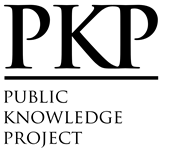Mapping mangrove forest density distribution and deforestation with machine learning on Google Earth Engine in West Nusa Tenggara Province
Abstract
Mangrove forests play a very important role in reducing greenhouse gas emissions as part of efforts to mitigate climate change in Indonesia. The existence of mangrove forests is sensitive to extreme environmental changes, and high levels of utilization increase the risk of deforestation. The purpose of this study is to provide information regarding distribution, density, and deforestation of mangrove forests in 2023 in West Nusa Tenggara Province. Data processing was carried out based on cloud computing using Google Earth Engine with a random forest algorithm and supervised classification, utilizing Landsat satellite imagery data from 2000 and 2023. The classification of mangrove forest density was performed by interpreting the satellite imagery from 2023 using the NDVI (Normalized Difference Vegetation Index) method. Field surveys were conducted at 40 sample points to observe the presence and condition of mangrove forests that experienced deforestation in 2023. The results of image data processing were validated using field data and high-resolution images from Google Earth, with an accuracy assessment method presented in the error matrix. The results showed that mangrove forests have a sparse density of 4968.10 ha, a medium density of 2516 ha, and a dense density of 4928 ha. The total deforestation area in West Nusa Tenggara Province is 610 ha, with Dompu Regency having the largest percentage of deforestation, accounting for 68% of the total mangrove deforestation in West Nusa Tenggara Pronvince. The destruction of mangrove forests is mostly caused by the fisheries sector, namely the conversion of mangrove forests into pond sites.
Keywords: Deforestation; Google Earth Engine; Mangrove Forest; NDVI; West Nusa Tenggara
Full Text:
PDFReferences
Akbar, N., Baksir, A., dan Tahir, I. 2015. Struktur komunitas ekosistem mangrove di kawasan pesisir Sidangoli Kabupaten Halmahera Barat, Maluku Utara. Depik, 4(3): 132–143. https://doi.org/10.13170/depik.4.3.3052
Alongi, D.M. 2002. Present state and future of the world’s mangrove forests. Environmental Conservation, 29(3): 331–349. https://doi.org/10.1017/S0376892902000231
Alongi, D.M. 2015. The impact of climate change on mangrove forests. Current Climate Change Reports, 1(1): 30–39. https://doi.org/10.1007/s40641-015-0002-x
Arfan, A. 2015. Discrimination of mangrove ecosystem objects on the visible spectrum using spectroradiometer HR-1024. Forum Geografi, 29(1): 83–88. https://doi.org/10.23917/forgeo.v29i1.794
Arifanti, V.B. 2020. Mangrove management and climate change: a review in Indonesia. IOP Conference Series: Earth and Environmental Science, 487(1). https://doi.org/10.1088/1755-1315/487/1/012022
Arifanti, V.B., Novita, N., Subarno, dan Tosiani, A. 2021. Mangrove deforestation and CO2 emissions in Indonesia. IOP Conference Series: Earth and Environmental Science, 874(1). https://doi.org/10.1088/1755-1315/874/1/012006
Bhowmik, A.K., Padmanaban, R., Cabral, P., and Romeiras, M.M. 2022. Global mangrove deforestation and its interacting social-ecological drivers: a systematic review and synthesis. Sustainability (Switzerland), 14(8). https://doi.org/10.3390/su14084433
BIG. 2014. Peraturan BIG Nomor 3 Tahun 2014 tentang Pedoman teknis pengumpulan dan pengolahan data geospasial mangrove. Badan Informasi Geospasial.
Brovelli, M.A., Sun, Y., and Yordanov, V. 2020. Monitoring forest change in the Amazon using multi-temporal remote sensing data and machine learning classification on Google Earth Engine. ISPRS International Journal of Geo-Information, 9(10). https://doi.org/10.3390/ijgi9100580
Bunting, P., Rosenqvist, A., Hilarides, L., Lucas, R.M., Thomas, N., Tadono, T., Worthington, T.A., Spalding, M., Murray, N.J., and Rebelo, L.M. 2022. Global mangrove extent change 1996–2020: Global Mangrove Watch version 3.0. Remote Sensing, 14(15): 0–32. https://doi.org/10.3390/rs14153657
Cahyaningsih, A.P., Deanova, A.K., Pristiawati, C.M., Ulumuddin, Y.I., Kusumaningrum, L.I.A., and Setyawan, A.D.W.I. 2022. Causes and impacts of anthropogenic activities on mangrove deforestation and degradation in Indonesia. Bonorowo Wetlands, 12(1): 12–22. https://doi.org/10.13057/bonorowo/w120102
Elfayetti, E., Rosni, Y., Yenny, N., dan Rahmadi, M.T. 2024. Analisis laju deforestasi hutan mangrove menggunakan GIS di Kecamatan Percut Sei Tuan Kabupaten Deli Serdang. Jurnal Ilmu Lingkungan, 22(3): 565–570. https://doi.org/10.14710/jil.22.3.565-570
Faridah-Hanum, I., Latiff, A., Hakeem, K.R., and Ozturk, M. 2014. Mangrove ecosystems of Asia: status, challenges and management strategies. Mangrove Ecosystems of Asia: Status, Challenges and Management Strategies, 1–471. https://doi.org/10.1007/978-1-4614-8582-7
Friess, D.A., Rogers, K., Lovelock, C.E., Krauss, K.W., Hamilton, S.E., Lee, S.Y., Lucas, R., Primavera, J., Rajkaran, A., and Shi, S. 2019. The state of the world’s mangrove forests: past, present, and future. Annual Review of Environment and Resources, 44: 89–115. https://doi.org/10.1146/annurev-environ-101718-033302
Gevana, D., Camacho, L., Carandang, A., Camacho, S., and Im, S. 2015. Land use characterization and change detection of a small mangrove area in Banacon Island, Bohol, Philippines using a maximum likelihood classification method. Forest Science and Technology, 11(4): 197–205. https://doi.org/10.1080/21580103.2014.996611
Ghose, M.K., Pradhan, R., and Sushan, S. 2010. Decision tree classification of remotely sensed satellite data using spectral separability matrix. International Journal of Advanced Computer Science and Applications, 1(5): 93–101. https://doi.org/10.14569/ijacsa.2010.010516
Hardianto, A., Dewi, P.U., Feriansyah, T., Fadillah, N., dan Sari, S. 2021. Pemanfaatan citra Landsat 8 dalam mengidentifikasi nilai indeks kerapatan vegetasi (NDVI) tahun 2013 dan 2019 (studi area: Kota Bandar Lampung). Jurnal Geografi, 2(1): 8–15. https://doi.org/10.23960/jgrs.2021.v2i1.38
Hendrawan, Gaol, J.L., dan Susilo, S.B. 2018. Studi kerapatan dan perubahan tutupan mangrove menggunakan citra satelit di Pulau Sebatik Kalimantan Utara. Jurnal Ilmu dan Teknologi Kelautan Tropis, 10(1): 99–109. https://doi.org/10.29244/jitkt.v10i1.18595
Howard, J., Hoyt, S., Isensee, K., Telszewski, M., and Pidgeon, E. 2014. Coastal blue carbon: Methods for assessing carbon stocks and emissions factors in mangroves, tidal salt marshes, and seagrasses. Conservation International, Intergovernmental Oceanographic Commission of UNESCO, International Union for Conservation of Nature, Arlington, Virginia, USA.
Kamal, M., Farda, N.M., Jamaluddin, I., Parela, A., Wikantika, K., Prasetyo, L.B., and Irawan, B. 2020. A preliminary study on machine learning and Google Earth Engine for mangrove mapping. IOP Conference Series: Earth and Environmental Science, 500(1). https://doi.org/10.1088/1755-1315/500/1/012038
Karang, I.W.G.A., Nuarsa, I.W., Hendrawan, I.G., Dewi, N.M.N.B.S., Yasa, P.K., and Krisnanda, I.M.D. 2024. Satellite remote sensing techniques for mapping and estimating mangrove carbon stocks in the small island of Gili Meno, West Nusa Tenggara, Indonesia. Biodiversitas, 25(9): 3189–3200. https://doi.org/10.13057/biodiv/d250941
Keena, N., Rondinel-Oviedo, D.R., Pomasonco-Alvis, M., and Bouffard, A. 2024. Beyond green: Integrating economic and social aspects to environmental life cycle assessments in Canadian housing. IOP Conference Series: Earth and Environmental Science, 1363(1). https://doi.org/10.1088/1755-1315/1363/1/012017
Li, H., Wan, W., Fang, Y., Zhu, S., Chen, X., Liu, B., and Hong, Y. 2019. A Google Earth Engine-enabled software for efficiently generating high-quality user-ready Landsat mosaic images. Environmental Modelling and Software, 112(November): 16–22. https://doi.org/10.1016/j.envsoft.2018.11.004
López-Angarita, J., Roberts, C.M., Tilley, A., Hawkins, J.P., and Cooke, R.G. 2016. Mangroves and people: Lessons from a history of use and abuse in four Latin American countries. Forest Ecology and Management, 368: 151–162. https://doi.org/10.1016/j.foreco.2016.03.020
Lowe, B., and Kulkarni, A. 2015. Multispectral image analysis using random forest. International Journal on Soft Computing, 6(1): 1–14. https://doi.org/10.5121/ijsc.2015.6101
Lu, W., Chen, L., Wang, W., Fung-Yee Tam, N., and Lin, G. 2013. Effects of sea level rise on mangrove Avicennia population growth, colonization, and establishment: Evidence from a field survey and greenhouse manipulation experiment. Acta Oecologica, 49: 83–91. https://doi.org/10.1016/j.actao.2013.03.009
Brander, L.M., Wagtendonk, A.J., Hussain, S.S., McVittie, A., Verburg, P.H., de Groot, R.S., and van der Ploeg, S. 2012. Ecosystem service values for mangroves in Southeast Asia: A meta-analysis and value transfer application. Ecosystem Services, 1(1): 62–69. https://doi.org/10.1016/j.ecoser.2012.06.003
Maxwell, A.E., Warner, T.A., and Fang, F. 2018. Implementation of machine-learning classification in remote sensing: An applied review. International Journal of Remote Sensing, 39(9): 2784–2817. https://doi.org/10.1080/01431161.2018.1433343
Osorio, A. 2017. An assessment of mangrove diseases and pests in South Africa. Forestry, 343–358. https://doi.org/10.1093/forestry/cpw063
Prasetyo, A.R., Valentino, N., dan Hadi, M.A. 2023. Identifikasi sebaran spasial dan kerapatan mangrove Gili Lawang menggunakan citra Landsat 9 OLI-2/TIRS-2. Jurnal Sains Teknologi & Lingkungan, 9(2): 215–225. https://doi.org/10.29303/jstl.v9i2.450
Purwanto, A.D., Asriningrum, W., Winarso, G., dan Parwati, E. 2014. Analisis sebaran dan kerapatan mangrove menggunakan citra Landsat 8 di Segara Anakan, Cilacap. Seminar Nasional Penginderaan Jauh 2014, 21 April: 232–241.
Santoso, R. 2024. Upaya pengurangan emisi dan insentif karbon. Dalam isu sepekan bidang ekkuinbang komisi IV minggu ke-1 Februari. Diakses dari https://berkas.dpr.go.id/pusaka/files/isu_sepekan/Isu Sepekan---I-PUSLIT-Februari-2024-36.pdf
Rahman, F.A., Retnowathi, R., Barmawi, M., Wijayanti, W., dan Hadi, A.P. 2024. Pemberdayaan dan pendampingan masyarakat pesisir peduli mangrove di kawasan mangrove Bangko-Bangko, Kabupaten Lombok Barat, Nusa Tenggara Barat. AL-HAYAT: Jurnal Pengabdian Masyarakat, 2(1): 13–18. https://doi.org/10.62588/ahjpm.2024.v2i1.0001
Fariz, T.R., Permana, P.I., Daeni, F., dan Putra, A.C.P. 2021. Pemetaan ekosistem mangrove di Kabupaten Kubu Raya menggunakan machine learning pada Google Earth Engine. Jurnal Geografi: Media Informasi Pengembangan dan Profesi Kegeografian, 18(2): 83–89. https://doi.org/10.15294/jg.v18i2.30231
Rivki, M., dan Bachtiar, A.M. 2022. Ekologi mangrove Pulau Lombok. UIN Mataram Press, 112.
Rizal, L., Ardhana, I., dan Wiryatno, J. 2014. Kajian degradasi lahan mangrove di pesisir Desa Labuhan Sangoro Kecamatan Maronge Kabupaten Sumbawa. Ecotrophic, 8(1): 17–23. https://ojs.unud.ac.id/index.php/ECOTROPHIC/article/download/13189/8874
Rudiastuti, A.W., Yuwono, D.M., and Hartini, S. 2018. Mangrove mapping using SPOT 6 at East Lombok Indonesia. IOP Conference Series: Earth and Environmental Science, 165(1). https://doi.org/10.1088/1755-1315/165/1/012005
Sidik, F., Kusuma, D.W., Kadarisman, H.P., dan Suhardjono. 2019. Panduan mangrove: Survei ekologi dan pemetaan. Balai Riset dan Observasi Laut, BRSDM-KKP.
Tosiani, A. 2020. Akurasi data penutupan lahan nasional tahun 1990-2016. Direktorat Inventarisasi dan Pemantauan Sumber Daya Hutan. Ditjen Planologi Kehutanan dan Tata Lingkungan, Kementerian Lingkungan Hidup dan Kehutanan, Jakarta, Indonesia, 1–41.
USGS. 2024. Landsat 8-9 Level 2 Science Product (L2SP) Guide Version 6.0 May 2024. URL https://www.usgs.gov/
Aftriana, C.V., Parman, S., dan Sanjoto, T.B. 2013. Analisis perubahan kerapatan vegetasi kota Semarang menggunakan aplikasi penginderaan jauh. Geo Image (Spatial-Ecological-Regional), 2(1). https://doi.org/10.15294/geoimage.v2i2.2188
Wahyuni, Y., Kumala Putri, E.I., dan Simanjuntak, S.M. 2014. Valuasi total ekonomi hutan mangrove di kawasan Delta Mahakam Kabupaten Kutai Kartanegara Kalimantan Timur. Jurnal Penelitian Kehutanan Wallacea, 3(1): 1. https://doi.org/10.18330/jwallacea.2014.vol3iss1pp1-12
Zhen-wang, L.I., Xiao-ping, X.I.N., Huan, T., Fan, Y., Bao-rui, C., and Bao-hui, Z. 2017. Estimating grassland LAI using the Random Forests approach and Landsat imagery in the meadow steppe of Hulunber, China. Journal of Integrative Agriculture, 16(2): 286–297. https://doi.org/10.1016/S2095-3119(15)61303-X
Zu Ermgassen, P.S., Mukherjee, N., Worthington, T.A., Acosta, A., da Rocha Araujo, A.R., Beitl, C.M., … and Spalding, M. 2020. Fishers who rely on mangroves: Modelling and mapping the global intensity of mangrove-associated fisheries. Estuarine, Coastal and Shelf Science, 247: 106975. https://doi.org/10.1016/j.ecss.2020.106975
DOI: https://doi.org/10.29103/aa.v1i1.18783
 Article Metrics
Article Metrics
 Abstract Views : 65 times
Abstract Views : 65 times
Refbacks
- There are currently no refbacks.
Copyright (c) Acta Aquatica: Aquatic Sciences Journal

This work is licensed under a Creative Commons Attribution 4.0 International License.









